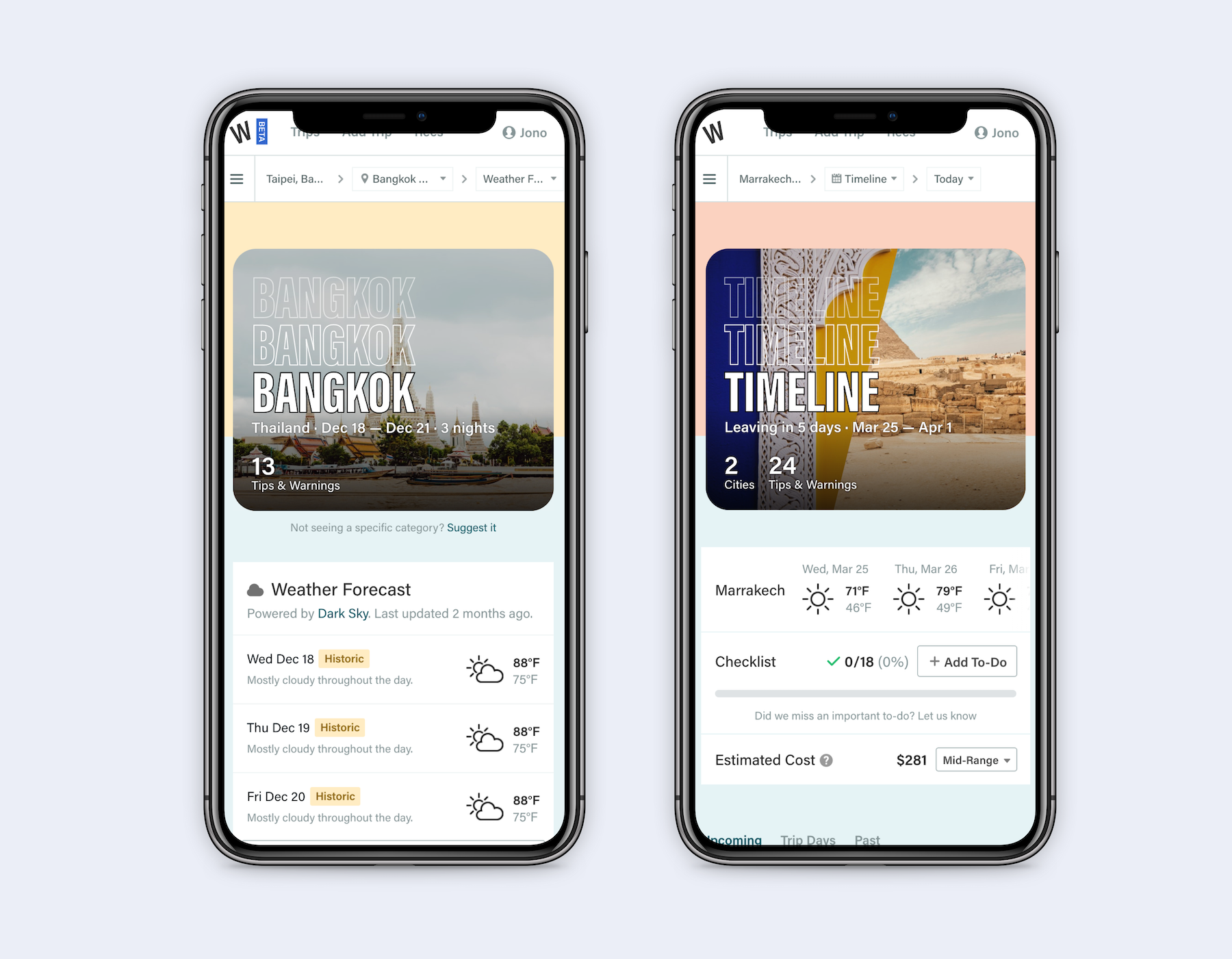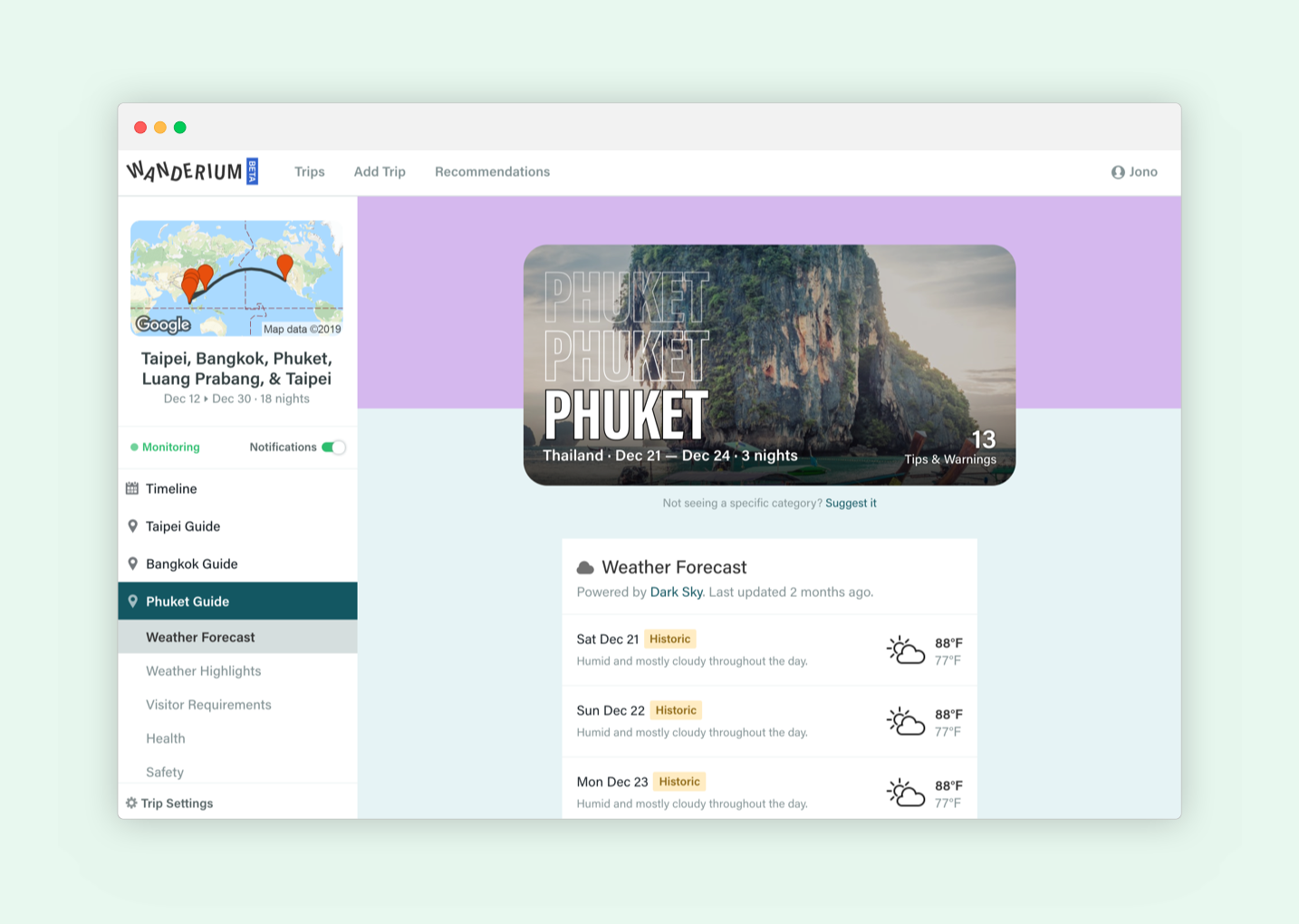
Role
This was a solopreneur “indie hacker” business. I designed and developed 100% of the app myself.
I learned full stack development to build Wanderium. Technologies used include React, styled-components, DynamoDB, Lambda (Node.js), AppSync, GraphQL, Cognito, SQS, and more.
Problem
Traveling today still means an endless amount of things to research and decide. People typically think of flights and hotels, but there are a ton of tricky things like visas, vaccinations, safety, local laws, and more, fragmented all across the internet. Studies show travelers visit over 38 sites and spend over 15 hours planning for a trip.
I became intimately familiar with this problem as I traveled and lived in 25 countries from 2016 to 2018. To validate that this was something others experienced, I conducted over 20 user interviews with frequent travelers to understand their current travel habits, the problems they faced, and how they currently solved them.
Solution
Wanderium is a smart, all-in-one travel assistant that uses data and personalization to ensure a smooth trip.
Its features are all designed to help you travel confidently with little effort:
- Prefilled checklists and reminders
- Personalized city guides
- Important local tips and warnings
- Customized packing lists
- Recommendations on travel products
- Data on over 500+ cities
A user just has to fill out their profile and create a trip, then everything is automatically generated for them.
Visit wanderium.com to sign up and try it out.
Design & Implementation
The information architecture’s main objects are users, trips, and cities (which belong to countries). Trips themselves contain to-dos, packing list items, and city guides. These all get their own screens as part of the core trip experience, with content recommendations layered on top of each.
The visual design and branding is inspired by the “Instagram” generation since the target market is tech savvy millennials. Lighter colors are used for a more approachable feeling, with a large dose of inspiration from popular D2C brands like Outdoor Voices, Casper, Everlane, etc.
I prototyped directly in code (React) and would continually iterate based on feedback from running usability tests and sending surveys. To ensure I’m constantly talking to users, opportunities to interact are frequently included such as a personal welcome email and suggestion CTAs all over the app.
To make it easier to build out the UI, I created a design system out of reusable components in React. I used and themed Palantir’s Blueprint React UI library for common components like buttons. For areas Blueprint didn’t cover, I created custom components such as one for truncating long content and displaying a “more” button.
Result
The beta was launched in October 2019, and so far the feedback has been positive. A sample:
- “I wanted to say a HUGE thank you!!! It’s unique and I’ll never travel without it anymore. I’m using it to plan a trip to Greece. It’s such an incredible help.”
- “Omg. This is incredible. Recommending this to my travel partners.”
- “I’ve found that it’s such a hassle planning trips! Love your app!! Lots of useful information. I totally believe that any work that is repeatedly done by each individual (research) should just be done by one company/product and you have done that!”
- “I just got back from a multi-destination trip, and Wanderium was really invaluable. While I was going through the weeks leading up to the trip I really found myself loving the service you are providing, and see a ton of room for growth and additional features.”
Metrics-wise, the conversion rate from landing page to sign up was ~15% and over 95% finished onboarding which were positive signals.

I decided to shut down Wanderium in 2020 after the COVID pandemic impacted my main target market of international travelers.